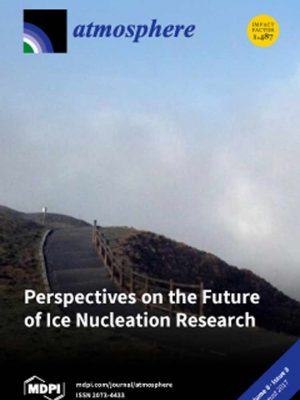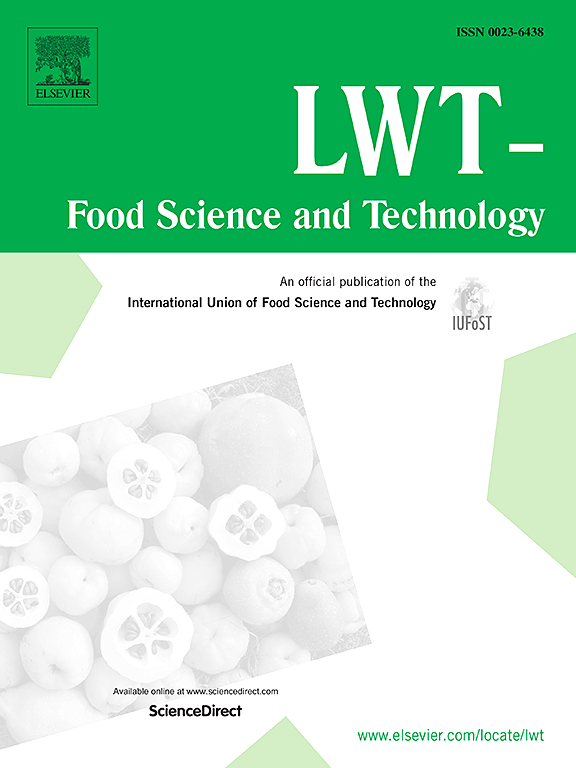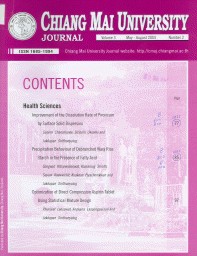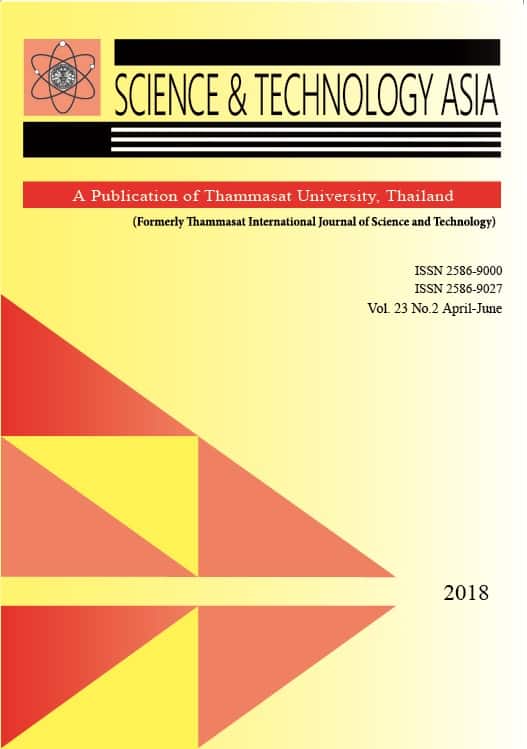
Film – induced tourism in Thailand: an influence of international tourists’ intention to visit film shooting location (2018)
Title : Film – induced tourism in Thailand: an influence of international tourists’ intention to visit film shooting location
Researcher : Suphaporn Rattanaphinanchai & Bongkosh N. Rittichainuwat
Department : Service Industry Management, Siam University, Bangkok, Thailand
E-mail : Bongkosh N. Rittichainuwat ngamson@gmail.com
Abstract : This study aimed to 1) describe the motivation of travelers to visit Thailand as a film shooting destination by applying the concept of tourists’ motivation on repeat visits to Thailand proposed by Rittichainuwat, Qu, and Mongkhonvanit (2008), 2) identify the travel motivations of tourists in visiting film shooting location in Thailand, and 3) assess whether film can motivate people to become a specific film tourists. This study used ‘The Beach’, and ‘Lost in Thailand’ movie which was film in Thailand as a case study. The instrument used in the present study is a self-administered questionnaire. A survey with 800 questionnaires was collected in June – December, 2015 and February – April, 2016. Descriptive statistics, Independent Sample Mean T-tests, Analysis of Variances, and the structural equation modeling was employed to analyze the data.
Publication : International Journal of Tourism Sciences Vol.18 No.4 2018
Link to Publication: https://www.tandfonline.com/toc/rijt20/current
Bibliography : Rattanaphinanchai, S. & Rittichainuwat, B. N.(2018). Film – induced tourism in Thailand: an influence of international tourists’ intention to visit film shooting location, International Journal of Tourism Sciences, 18(4), 325-332. DOI: 10.1080/15980634.2018.1551317
Author details in Scopus: Rittichainuwat, Bongkosh Ngamsom
Scopus Citations: https://www.scopus.com/sources.uri?DGCID=Scopus_blog_post_check2015
Google Scholar Citations: https://scholar.google.com/citations?user=ifUlKJoAAAAJ&hl=en

Forced oscillation technique as a predictor for loss of control in asthmatic children (2020)
Title : Forced oscillation technique as a predictor for loss of control in asthmatic children
Researcher : Clin.Prof.Suwat Benjaponpitak
Department : Faculty of Medicine, Siam University, Bangkok, Thailand
E-mail : med@siam.edu
Abstract : Background: A reliable objective tool using as a predictor of asthma control status could assist asthma management.
Objective: To find the parameters of forced oscillation technique (FOT) as predictors for the future loss of asthma symptom control.
Methods: Children with well-controlled asthma symptom, aged 6-12 years, were recruited for a 12-week prospective study. FOT and spirometer measures and their bronchodilator response were evaluated at baseline. The level of asthma symptom control was evaluated according to Global Initiative for Asthma.
Results: Among 68 recruited children, 41 children (60.3%) maintain their asthma control between 2 visits (group C-C), and 27 children (39.7%) lost their asthma control on the follow-up visit (group C-LC). Baseline FOT parameters, including the values of respiratory resistance at 5 Hz (R5), respiratory resistance at 20 Hz (R20), respiratory reactance at 5 Hz, area of reactance, %predicted of R5 and percentage of bronchodilator response (%∆) of R5 and R20 were significantly different between C-C and C-LC groups. In contrast, only %∆ of forced vital capacity, forced expiratory volume in 1 second (FEV1), and FEF25%-75% (forced expiratory flow 25%-75%) were significantly different between groups. Multiple logistic regression analysis revealed that %predicted of R5, %∆R5, %predicted of FEV1 and %∆FEV1 were the predictive factors for predicting the future loss of asthma control. The following cutoff values demonstrated the best sensitivity and specificity for predicting loss of asthma control: %predicted of R5=91.28, %∆R5=21.2, %predicted of FEV1=89.5, and %∆FEV1=7.8. The combination of these parameters predicted the risk of loss of asthma control with area under the curve of 0.924, accuracy of 83.8%.
Conclusion: Resistance FOT measures have an additive role to spirometric parameter in predicting future loss of asthma control.
Keywords: Asthma; Frequency of resonance; Reactance; Resistance; Spirometry.
Link to Academic article: DOI: 10.5415/apallergy.2020.10.e3
Journal : Asia Pacific Allergy Vol.10 No.1 (2020)
Bibliography : Kreetapirom, P., Kiewngam, P., Jotikasthira, W., Kamchaisatian, W., Benjaponpitak, S., & Manuyakorn, W. (2020, January 17). Forced oscillation technique as a predictor for loss of control in asthmatic children. Asia Pac Allergy, 10(1), e3. doi: 10.5415/apallergy.2020.10.e3. PMID: 32099825; PMCID: PMC7016320.

Generic analytical models of memelement and inverse memelement with time-dependent memory effects (2023)
Title : Generic analytical models of memelement and inverse memelement with time-dependent memory effects
Researcher : Banchuin, R.
Department : Faculty of Engineering, & Graduated School of IT, Siam University, Bangkok, Thailand
Email : rawid.ban@siam.edu
Abstract :
Purpose
Design/methodology/approach
Findings
Originality/value
Link to article : COMPEL – The International Journal for Computation and Mathematics in Electrical and Electronic Engineering, 2023, 42(6), pp. 1669–1689. https://doi.org/10.1108/COMPEL-03-2023-0085
Journal : COMPEL – The International Journal for Computation and Mathematics in Electrical and Electronic Engineering / in Scopus
Citation : Banchuin, R. (2023). Generic analytical models of memelement and inverse memelement with time-dependent memory effects. COMPEL – The International Journal for Computation and Mathematics in Electrical and Electronic Engineering, 42(6), 1669–1689. https://doi.org/10.1108/COMPEL-03-2023-0085
Genetic characterization of carbapenem-resistant enterobacteriaceae and the spread of carbapenem-resistant klebsiella pneumonia ST340 at a university hospital in Thailand (2015)
Title : Genetic characterization of carbapenem-resistant enterobacteriaceae and the spread of carbapenem-resistant klebsiella pneumonia ST340 at a university hospital in Thailand
Researcher : Netikul, T.,[mfn]1[/mfn] Kiratisin, P.
Department : 1Faculty of Medicine, Siam University, Bangkok, Thailand
E-mail : med@siam.edu
Abstract : Carbapenem-resistant Enterobacteriaceae (CRE) has increasingly spread worldwide in the past decade. The prevalence and characteristics of CRE in Thailand are unknown. In this study, we conducted a 2-year surveillance of CRE among 12,741 clinical isolates of Enterobacteriaceae at the largest university hospital in Thailand with molecular characterization of beta-lactamase (bla) genes, including carbapenemase genes. The CRE prevalence was 1.4%. blaKPC-13 and blaIMP-14a were the only carbapenemase genes detected among these CRE isolates. blaKPC-13 gene was found in a single isolate of Escherichia coli, Enterobacter cloacae and Citrobacter freundii, and blaIMP-14a was found in four isolates of Klebsiella pneumoniae. Carbapenem-resistant K. pneumoniae (CRKP) isolates were resistant to multiple carbapenems at a higher ratio than other CRE species, and thus were further characterized for resistance phenotypes, bla genotypes and molecular epidemiology. Most CRKP isolates harboured multiple bla genes, especially those related to extended-spectrum beta-lactamases. Seven CRKP isolates were resistant to all tested carbapenems, and showed decreased ompK35 and/or ompK36 porin gene expression. Molecular typing of CRKP based on pulsed-field gel electrophoresis (PFGE) demonstrated several unrelated clones. Multilocus sequence typing (MLST) was partially concordant with PFGE results and revealed that ST340, a member of drug-resistant K. pneumoniae clonal complex 258, was the most predominant clone, followed by ST48, ST11 and ST273. The novel ST1645 was identified from this study. ST340 has neither been shown to be predominated among CRKP from other studies, nor been reported in Thailand. Therefore, it emphases a critical concern to monitor and control the spread of CRKP.
Link to Academic article: https://doi.org/10.1371/journal.pone.0139116
Journal : PLoS ONE, 2015, 10(9), e0139116
Bibliography : Netikul, T., & Kiratisin, P. (2015). Genetic characterization of carbapenem-resistant enterobacteriaceae and the spread of carbapenem-resistant klebsiella pneumonia ST340 at a university hospital in Thailand. PLoS ONE, 2015, 10(9), e0139116. https://doi.org/10.1371/journal.pone.0139116

Homocysteine and Lipid Peroxidation in Active and Passive Smoking (2018)
Title : Homocysteine and Lipid Peroxidation in Active and Passive Smoking
Researcher : Duangkamol Viroonudomphol, Faculty of Nursing, Siam University, Bangkok, Thailand
Pornpimon Poomrittikul, Faculty of Nursing, Siam University, Bangkok, Thailand
Tharntip Jirakanjana, Faculty of Nursing, Siam University, Bangkok, Thailand
Siriwan Tribanyatkul, Pramongkutklaw Hospital, Bangkok, Thailand
Saowanee Kanjanachumpon, Faculty of Medicine, Ramathibodi Hospital, Mahidol University, Bangkok, Thailand
Department : Faculty of Nursing, Siam University, Bangkok, Thailand
E-mail : v_duangkamol@yahoo.com
Abstract : Disease risk due to smoking is not limited to smokers only. Passive smoking (exposure to environmental tobacco smoke) is associated with adverse health effect especially in cardiovascular disease. Side-stream cigarette smoke, a major component of secondhand smoke induces reactive oxygen species with promote oxidative stress. This paper summarizes the cardiovascular effects of tobacco smoke. According to the results of the alternative level of biochemistry substances, Cholesterol (C), HDL- Cholesterol (HDL-C), LDL-Cholesterol (LDL-C), Triglyceride (TG), Malondialdehyde (MDA), Conjugate diene (CD), vitamin B12, folate and Homocysteine (Hcy). The results showed that vitamin B12 and Hcy of smokers were significantly higher than those of non-smokers while C, LDL-C, TG and folate were significantly lower than those of non-smokers. More detail of smoking group, the industrial tobacco smokers had HDL-C and vitamin B12 lower than those in non-smokers whereas passive smokers and local handmade tobacco smokers had serum HDL-C and vitamin B12 higher than those in non-smokers. For serum C, LDL-C, TG and folate of all groups of smokers were significantly lower than non-smokers. The industrial tobacco smokers had serum MDA significantly higher than non-smokers but passive smokers and local handmade tobacco smokers had serum MDA lower than non-smokers. The industrial tobacco smokers and passive smokers had serum Hcy significantly higher than non-smokers but local handmade tobacco smokers had serum Hcy lower than non-smokers.
Keywords : Homocysteine, Lipid Peroxidation, Active and Passive Smoking
Journal : Science Journal of Public Health, 6(2), 43-49 : DOI:10.11648/j.sjph.20180602.12
Bibliography : Duangkamol Viroonudomphol, Pornpimon Poomrittikul, Tharntip Jirakanjana, Siriwan Tribanyatkul, & Saowanee Kanjanachumpon. (2018). Homocysteine and Lipid Peroxidation in Active and Passive Smoking. Science Journal of Public Health, 6(2), 43-49. doi: 10.11648/j.sjph.20180602.12

Homocysteine, Vitamin B12 and Folic Acid in Children with Acute Glomerulonephritis (2018)
Title : Homocysteine, Vitamin B12 and Folic Acid in Children with Acute Glomerulonephritis
Researcher : 1.Duangkamol Viroonudomphol, 2.Saowanee Kanjanachumpol, 3.Sarinya Sirisate
Department : 1.Faculty of Nursing, Siam University, Bangkok, Thailand
2.Faculty of Medicine Ramathibody Hospital, Mahidol University, Bangkok, Thailand
3.Department of Pediatrics, Faculty of Medicine Ramathibody Hospital, Mahidol University, Bangkok, Thailand
E-mail : v_duangkamol@yahoo.com
Abstract : Homocysteine (Hcy) is an intermediate product of methionine formed by its demethylation. Hcy can be metabolized via remethylation to methionine or transsulfuration to cysteine which is dependent on several enzymes and co-factors. It is deleterious to blood vessel including glomeruli. Kidney is a major organ that metabolizes Hcy. More than 80% of patients with chronic renal disease develop hyperhomocysteinemia (hHcy). Accessible data of plasma Hcy in nephritic syndrome (NS) patients are controversial with increased, decreased and unchanged values reported. In renal patients, plasma Hcy concentration can be reduced by administration of folic acid. Absolute or rel-ative deficiencies of folate, vitamin B6, or vitamin B12 may also play a role. Therefore, plasma Hcy, folic acid, vitamin B6, and vitamin B12 in children with acute glomerulonephritis (AGN) were accessed in this study. Hcy, folic acid vitamin B12, B6 and renal function such as blood urea itrogen (BUN), creatinine (Cr) were analyzed 12 pediatric patients with AGN and 15 age and sex matched healthy children served as controls. The results revealed that a significant increase in plasma Hcy in children with acute AGN when com-pared with controls. For simple regression analysis, Hcy was positively corre-lated with BUN, Cr, ferritin and uric acid but negatively correlated with serum glutathione. This research indicated hHcy suggests enhanced risks for inflam-mation and endothelial injury, which lead to kidney disease. Folic acid has also been shown to improve endothelial function, suggesting an alternative expla-nation for the effect of folic acid on endothelial function. Careful considera-tions of not only dietary measures are necessary but also folate and vitamin B supplementation for reducing hHcy in AGN need to be investigated.
Keywords : Folic Acid, Homocysteine, Hyperhomocysteinemia, Acute Glomerulonephriti
Journal : World Journal of Engineering and Technology, 6(3), 661-670. : https://doi.org/10.4236/wjet.2018.63042
Link to Full-Text PDF: https://www.scirp.org/pdf/WJET_2018080915421290.pdf
Bibliography : Viroonudomphol, D. , Kanjanachumpol, S. & Sirisate, S. (2018) Homocysteine, Vitamin B12 and Folic Acid in Children with Acute Glomerulonephritis. World Journal of Engineering and Technology, 6(3), 661-670. doi: 10.4236/wjet.2018.63042.

Impacts of Climate Change on Rainfall Erosivity in the Huai Luang Watershed (2017)
Title : Impacts of Climate Change on Rainfall Erosivity in the Huai Luang Watershed
Researcher : Pheerawat Plangoen and Parmeshwar Udmale
Department : Department of Civil Engineering, Faculty of Engineering, Siam University, Bangkok, Thailand
Email : pheerawat.pla@siam.edu
Abstract : This study focuses on the impacts of climate change on rainfall erosivity in the Huai Luang watershed, Thailand. The multivariate climate models (IPCC AR5) consisting of CCSM4, CSIRO-MK3.6.0 and MRI-CGCM3 under RCP4.5 and RCP8.5 emission scenarios are analyzed. The Quantile mapping method is used as a downscaling technique to generate future precipitation scenarios which enable the estimation of future rainfall erosivity under possible changes in climatic conditions. The relationship between monthly precipitation and rainfall erosivity is used to estimate monthly rainfall erosivity under future climate scenarios. The assessment compared values of rainfall erosivity during 1982–2005 with future timescales (i.e., the 2030s, 2050s, 2070s and 2090s). The results indicate that the average of each General Circulation Model (GCM) combination shows a rise in the average annual rainfall erosivity for all four future time scales, as compared to the baseline of 8302 MJ mm ha−1 h−1 year−1, by 12% in 2030s, 24% in 2050s, 43% in 2070s and 41% in 2090s. The magnitude of change varies, depending on the GCMs (CCSM4, CSIRO-MK3.6.0, and MRI-CGCM3) and RCPs with the largest change being 82.6% (15,159 MJ mm ha−1 h−1 year−1) occurring under the MRI-CGCM3 RCP8.5 scenario in 2090s. A decrease in rainfall erosivity has been found, in comparison to the baseline by 2.3% (8114 MJ mm ha−1 h−1 year−1) for the CCSM4 RCP4.5 scenario in 2030s and 2.6% (8088 MJ mm ha−1 h−1 year−1) for the 2050s period. However, this could be considered uncertain for future rainfall erosivity estimation due to different GCMs. The results of this study are expected to help development planners and decision makers while planning and implementing suitable soil erosion and deposition control plans to adapt climate change in the Huai Luang watershed.
Key words : climate change; rainfall erosivity; precipitation; soil erosion; sedimentation
Link to article : Atmosphere Vol.8 No.8 Aug 2017, pp.1-18. https://doi.org/10.3390/atmos8080143
Journal : Atmosphere / in Scopus
Bibliography : Pheerawat Plangoen & Parmeshwar Udmale. (2017). Impacts of Climate Change on Rainfall Erosivity in the Huai Luang Watershed. Atmosphere, 8(8), 1-18. https://doi.org/10.3390/atmos8080143

Improvement of solubility, foaming, and emulsification properties of coconut (Cocos nucifera L.) protein by non-enzymatic deamidation (2022)
Title : Improvement of solubility, foaming, and emulsification properties of coconut (Cocos nucifera L.) protein by non-enzymatic deamidation
Researcher : Meenmanee, S., Rattananukrom, A., Thaiphanit, S., Suppavorasatit, I.
Department : ภาควิชาเทคโนโลยีการอาหาร คณะวิทยาศาสตร์ มหาวิทยาลัยสยาม
E-mail : somruedee.tha@siam.edu
ฐานข้อมูลงานวิจัย มหาวิทยาลัยสยาม:
Link to article: LWT-Food Science and Technology, Vol.153 (2022), page 112493. https://doi.org/10.1016/j.lwt.2021.112493
Journal : LWT / in Scopus
Bibliography : Meenmanee, S., Rattananukrom, A., Thaiphanit, S., & Suppavorasatit, I.(2022). Improvement of solubility, foaming, and emulsification properties of coconut (Cocos nucifera L.) protein by non-enzymatic deamidation. LWT-Food Science and Technology, 153, 112493. https://doi.org/10.1016/j.lwt.2021.112493

Improving the Flavor of Soy Ice Cream by Adding Lemongrass or Pandan Leaf Extracts (2014)
Title : Improving the Flavor of Soy Ice Cream by Adding Lemongrass or Pandan Leaf Extracts
Researcher : Sirinat Natisri, Kanjana Mahattanatawee*, Siwatt Thaiudom
Department : *Food Technology Department, Faculty of Science, Siam University
E-mail : *kanjana@siam.edu
Abstract : Lemongrass or pandan leaf extracts were used separately to improve the flavor of soy ice cream. Lemongrass or pandan leaf extracts with water in concentrations of 10: 100, 15: 100, and 20: 100 w/w were examined using sensory evaluation for the best flavor acceptance. The best ratio was selected to spray dry using maltodextrin as the drying medium at various concentrations (2, 4, 6, 8 and 10% w/w). A ranking preference test was used to determine the flavor of the soy ice cream. Threshold testing was used to determine the sensorial quality of soy isolate protein mixed with both herb extracts, and soy ice cream mixed with both herb extracts. The flavor compound was analyzed by using headspace, solid-phase microextraction, gas chromatography, mass spectrophotometry (HSSPME-GC-MS). The best concentration of fresh lemongrass or pandan leaf extracts for improving the sensorial flavor of soy ice cream was 10: 100 (w/w). The optimum quantity of maltodextrin for spray drying was 2%(w/w). The threshold values of fresh and powdered lemongrass extracts that could mask the beany flavor in soy protein isolate solution and soy ice cream were lower than those of fresh and powdered pandan leaf extracts. The beany flavor in soy protein isolate solution and soy ice cream was mainly composed of hexanal, pentanal, benzaldehyde, 2-pentyl-furan and 1-octen-3-ol. The flavor compounds in pandan leaf extract were 2-acetyl-1-pyroline and 3-methyl-2 (5H)-furanone, while those of lemongrass extract were β-myrcene, α-pinene, 3-carene, neral, geranial and geraniol. From the results of HS-SPME-GC-MS, the beany flavor was masked by these extracts. This indicated that lemongrass and pandan leaf extracts could mask the beany flavor and improve the sensorial quality of soy ice cream.
Keywords: Ice cream, Lemongrass, Pandan leaf, Beany flavor, Headspace, Solidphase microextraction, Gas-chromatography, Mass spectrophotometry
Link to Publication: CHIANG MAI UNIVERSITY JOURNAL OF NATURAL SCIENCES/Natural and Life Sciences Communications Volume 13, Issue 01(S) DECEMBER 2014
Bibliography : Natisri, S., Mahattanatawee, K., & Thaiudom, S. (2014). Improving the flavor of soy ice cream by adding lemongrass or Pandan leaf extracts. Chiang Mai University Journal of Natural Sciences, 13(1 s), 469-482.

Influence of Whey Protein on Stability of α-Mangostin Entrapped in Alginate/Whey Protein Beads (2018)
Title : Influence of Whey Protein on Stability of α-Mangostin Entrapped in Alginate/Whey Protein Beads
Researcher : Tunyaporn Sirilert, Nattapol Kajonboon and Nattiga Silalai *
Department : ภาควิชาเทคโนโลยีการอาหาร คณะวิทยาศาสตร์ มหาวิทยาลัยสยาม
E-mail : *ผู้ประสานงานหลัก: tunyapornfood@gmail.com
ฐานข้อมูลงานวิจัย มหาวิทยาลัยสยาม : https://e-research.siam.edu/kb/influence-of-whey-protein-on-stability/
Link to article: Science & Technology Asia, 23(2), 29–36. https://ph02.tci-thaijo.org/index.php/SciTechAsia/article/view/131198
Journal : Science & Technology Asia / in Scopus
Bibliography : Sirilert, T., Kajonboon, N., & Silalai, N. (2018). Influence of Whey Protein on Stability of α-Mangostin Entrapped in Alginate/Whey Protein Beads. Science & Technology Asia, 23(2), 29–36. https://ph02.tci-thaijo.org/index.php/SciTechAsia/article/view/131198